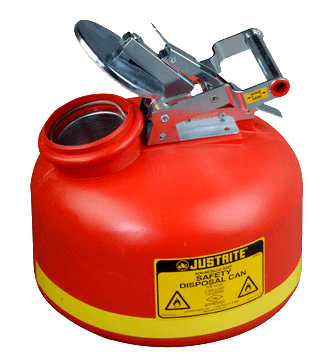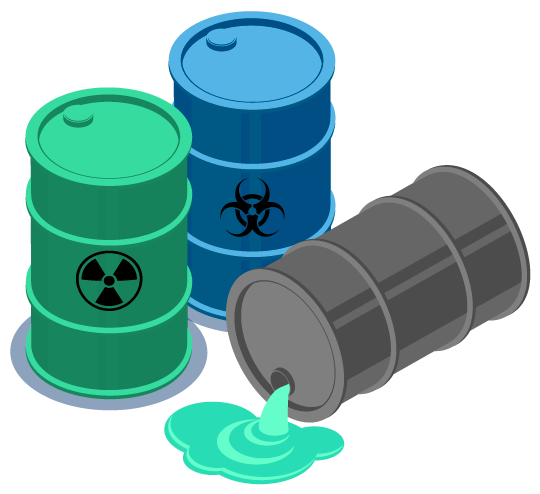Industrial Wastewater Treatment: Custom Solutions for Complex Wastewater Difficulties
Wiki Article
Exactly How Liquid Garbage Disposal Works: An In-depth Introduction of Strategies and Technologies Employed

Summary of Fluid Waste Types
The intricacy of liquid waste types demands a comprehensive understanding of their features and effects for disposal. Fluid waste can extensively be categorized right into numerous types, including commercial, metropolitan, agricultural, and hazardous waste. Each category shows distinctive homes, calling for specific management techniques to mitigate ecological and wellness threats.
Industrial fluid waste stems from manufacturing procedures and frequently contains a series of pollutants, such as heavy steels, solvents, and natural substances. Local liquid waste, primarily comprising wastewater from families and commercial facilities, has organic matter, nutrients, and pathogens (industrial wastewater treatment). Agricultural fluid waste, consisting of overflow from ranches, may consist of fertilizers, chemicals, and animal waste, positioning risks to water high quality and environments
Dangerous liquid waste is defined by its poisoning, sensitivity, or prospective to cause harm. Understanding these varied fluid waste kinds is crucial for developing reliable disposal methods and guaranteeing compliance with ecological guidelines.
Physical Treatment Techniques

Testing is the first action, where bigger particles and particles are eliminated from the liquid waste utilizing screens or grates. This process safeguards downstream tools from damages and guarantees smoother operation. Following testing, sedimentation uses gravitational pressure to different solids from liquids. In sedimentation containers, much heavier bits clear up near the bottom, creating a sludge layer, while the clarified fluid can be further dealt with.
Filtration is one more crucial technique that entails passing the fluid through porous products, such as sand or membrane layers, to record smaller bits. This step boosts the top quality of the liquid, making it appropriate for succeeding therapy procedures.

Chemical Therapy Techniques
Chemical therapy strategies are essential for efficiently handling liquid waste, particularly in addressing dissolved and colloidal contaminants that physical approaches might not sufficiently remove. These strategies utilize different chemical agents to reduce the effects of, precipitate, or change unsafe compounds into much less harmful types.One common method is coagulation and flocculation, where chemicals such as alum or ferric chloride are contributed to advertise the aggregation of suspended fragments. This process boosts sedimentation, enabling simpler elimination of the resulting sludge. Additionally, oxidation processes, using representatives like chlorine or ozone, are used to damage down intricate natural substances and microorganisms, providing the waste more secure for discharge or more therapy.
Neutralization is an additional important technique, which readjusts the pH of acidic or alkaline waste streams to neutral levels, preventing possible injury to downstream systems and the atmosphere. Additionally, progressed oxidation processes (AOPs) use combinations of oxidants and ultraviolet light to break down relentless toxins, achieving a higher level of treatment effectiveness.
Organic Treatment Procedures
Biological treatment processes play a crucial duty in the management of fluid waste by using bacteria to break down raw material and reduce contaminant levels. These procedures can be generally classified into anaerobic and cardiovascular treatments, each utilizing particular microbial neighborhoods to attain effective waste destruction.Cardio therapy entails making use of oxygen to promote the breakdown of natural products by microorganisms. This process is generally applied in activated sludge systems, where aeration tanks supply a helpful atmosphere for microbial growth, bring about the oxidation of natural pollutants. The resultant biomass can be divided from dealt with effluent via sedimentation.
On the other hand, anaerobic treatment happens in the absence of oxygen, relying upon various germs to break down natural issue. This method is specifically useful for high-strength waste, as it creates biogas, an eco-friendly power source, while reducing sludge manufacturing. Technologies such as anaerobic digesters are frequently utilized in local and industrial applications.
Both cardio and anaerobic organic therapies not just decrease the environmental impact of liquid waste but additionally promote resource recuperation, making them vital elements of lasting waste monitoring methods. Their efficiency, efficiency, and adaptability support their prevalent implementation throughout numerous fields.
Emerging Technologies in Disposal
Ingenious methods to liquid waste disposal are swiftly evolving, driven by developments in innovation and a boosting emphasis on sustainability. Among these emerging technologies, membrane bioreactors (MBRs) have obtained traction for their capacity to integrate biological treatment with membrane filtering, resulting in top notch effluent that can be reused in various applications. MBRs enable smaller sized impacts and more efficient procedures compared to typical systems.Another promising development is using anaerobic digestion combined with nutrient healing technologies, which not only deals with fluid waste but additionally creates biogas and recovers valuable nutrients like nitrogen and phosphorus. This twin benefit boosts resource efficiency and lowers ecological impact.
Additionally, advanced oxidation processes (AOPs) are being embraced for the destruction of complicated organic contaminants. These techniques utilize effective oxidants and drivers to damage down pollutants at the molecular degree, offering an extremely effective service for tough waste streams.
Moreover, the integration of expert system and artificial intelligence in waste administration systems is optimizing operational effectiveness and predictive upkeep, leading to minimized prices and enhanced environmental compliance. These innovations mirror a substantial change towards even more effective and sustainable liquid waste disposal methods.
Conclusion
To conclude, efficient liquid garbage disposal demands an extensive understanding of various techniques and technologies. The combination of physical, chemical, and industrial wastewater treatment solutions organic treatment methods guarantees the efficient monitoring of diverse waste types. Additionally, the emergence of cutting-edge modern technologies improves treatment efficiency and advertises sustainability in waste administration practices. By constantly advancing these methodologies, it comes to be possible to attend to the growing challenges connected with liquid waste, inevitably adding to environmental management and resource healing.Fluid waste disposal is a vital aspect of environmental administration, requiring a thorough understanding of numerous techniques and innovations tailored to different waste kinds. Fluid waste can extensively be classified right into several types, consisting of industrial, local, agricultural, and unsafe waste. Agricultural fluid waste, consisting of runoff from ranches, may consist of fertilizers, pesticides, and pet waste, posing risks to water top quality and ecosystems.
Various physical treatment approaches play an important role in handling fluid waste properly - industrial wastewater treatment.In conclusion, reliable liquid waste disposal necessitates an extensive understanding of numerous strategies and technologies
Report this wiki page